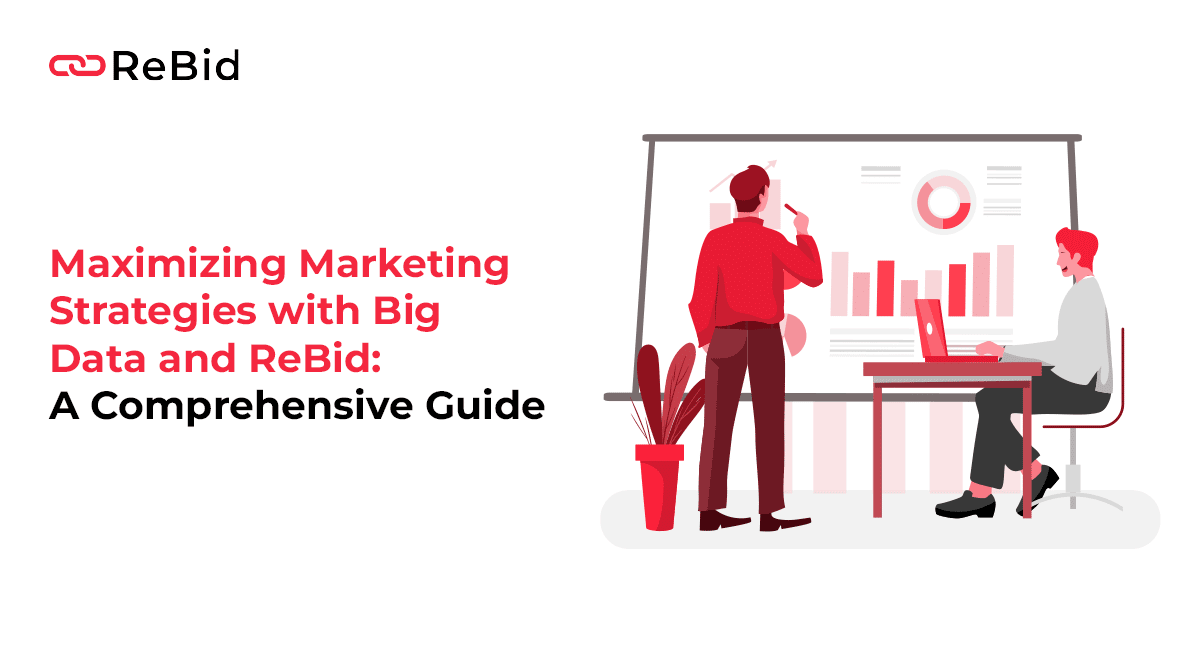Data utilization in the best way possible for marketing strategies has been on a rise. Marketing technology, or “MarTech” for short, has seen a significant increase in the use of big data in recent years. Big data refers to the vast amounts of structured and unstructured data that is generated every day by businesses, individuals, and the world around us.
This data can be harnessed to drive better marketing decisions, improve customer experiences, and create new revenue streams. In this article, we will explore how big data is being harnessed in MarTech, and specifically how ReBid, a customised customer data platform (CDP) is being utilised to develop, enrich, and activate unique customer profiles from all sources of first and third party data.
Strategies for Data Collection
One of the biggest challenges in harnessing big data is collecting it in a way that is organized and accessible. There are several strategies that marketers can use to collect data, including:
Website analytics: Tools like Google Analytics can provide valuable insights into website traffic, user behavior, and engagement. This data can be used to optimize website content and improve the customer experience.
Social media monitoring: Social media platforms generate vast amounts of data about user behavior and preferences. This data can be used to create targeted advertising campaigns and improve social media engagement.
Customer surveys: Surveys can be a valuable tool for collecting data on customer preferences, behavior, and satisfaction. This data can be used to improve customer experiences and inform marketing strategies.
Third-party data: Marketers can also purchase data from third-party sources to supplement their own data. This data can be used to create more comprehensive customer profiles and inform marketing decisions.
Strategies for Data Analysis
Once data has been collected, the next step is to analyze it in a way that is meaningful and actionable. There are several strategies that marketers can use to analyze data, including:
Data visualization: Tools like Tableau and Power BI can be used to create visualizations of data that make it easier to understand and interpret. This can help marketers identify patterns and trends in data that might not be immediately apparent.
Predictive modeling: Predictive modeling uses statistical algorithms to identify patterns in data and make predictions about future behavior. This can help marketers identify potential opportunities and optimize marketing strategies.
Machine learning: Machine learning algorithms can be used to analyze large datasets and identify patterns and trends that might not be immediately apparent. This can help marketers identify opportunities to improve customer experiences and drive revenue growth.
Strategies for Data Utilization
Once data has been collected and analyzed, the next step is to use it in a way that drives business results. There are several strategies that marketers can use to utilize data, including:
Personalization: Personalization entails focused marketing messages and experiences to individual customers based on their distinct tastes and behavior. This can boost consumer engagement and drive revenue growth.
Targeted advertising: Targeted advertising involves using customer Utilization data to create more effective advertising campaigns. This can help improve ad performance and reduce advertising costs.
Cross-selling and upselling: Cross-selling and upselling involve using customer Utilization data to identify opportunities to sell additional products or services to existing customers. This can help drive revenue growth and improve customer satisfaction.

ReBid: A Customized CDP
ReBid is a customized customer data platform (CDP) that is designed to help marketers create, enrich, and activate unique customer profiles from 1st & 3rd party data across all sources. ReBid provides a centralized platform for collecting, analyzing, and utilizing customer data, which can help marketers make more informed decisions and improve customer experiences.
ReBid is built on a modular architecture that allows marketers to customize the platform to meet their specific needs. This includes the ability to integrate with other marketing technologies, such as email marketing platforms, push notification, and more to create a comprehensive view of the customer across all touchpoints.
One of the key benefits of ReBid is its ability to create a unified customer profile that includes both 1st and 3rd party data. This can help marketers create a more complete view of their customers, which can inform more effective marketing strategies. ReBid also provides tools for data enrichment, which can help fill in gaps in customer data and provide a more detailed understanding of customer behavior.
ReBid also includes tools for data activation, which can help marketers put their data to use in meaningful ways. This includes the ability to create targeted advertising campaigns, personalize marketing messages, and identify opportunities for cross-selling and upselling.
In addition to its data management capabilities, ReBid also includes advanced analytics tools that can help marketers identify patterns and trends in customer data. This can inform more effective marketing strategies and help drive business results.
Conclusion
The use of big data in MarTech is rapidly becoming an essential tool for marketers looking to improve customer experiences and drive revenue growth. Strategies for data collection, analysis, and utilization are key to successfully harnessing big data, and customized customer data platforms like ReBid can provide a centralized platform for managing data across all sources.
By leveraging the power of big data and tools like ReBid, marketers can create more comprehensive customer profiles, inform more effective marketing strategies, and drive better business results. As the importance of big data continues to grow in MarTech, businesses that embrace these strategies are likely to gain a competitive edge in the market.





